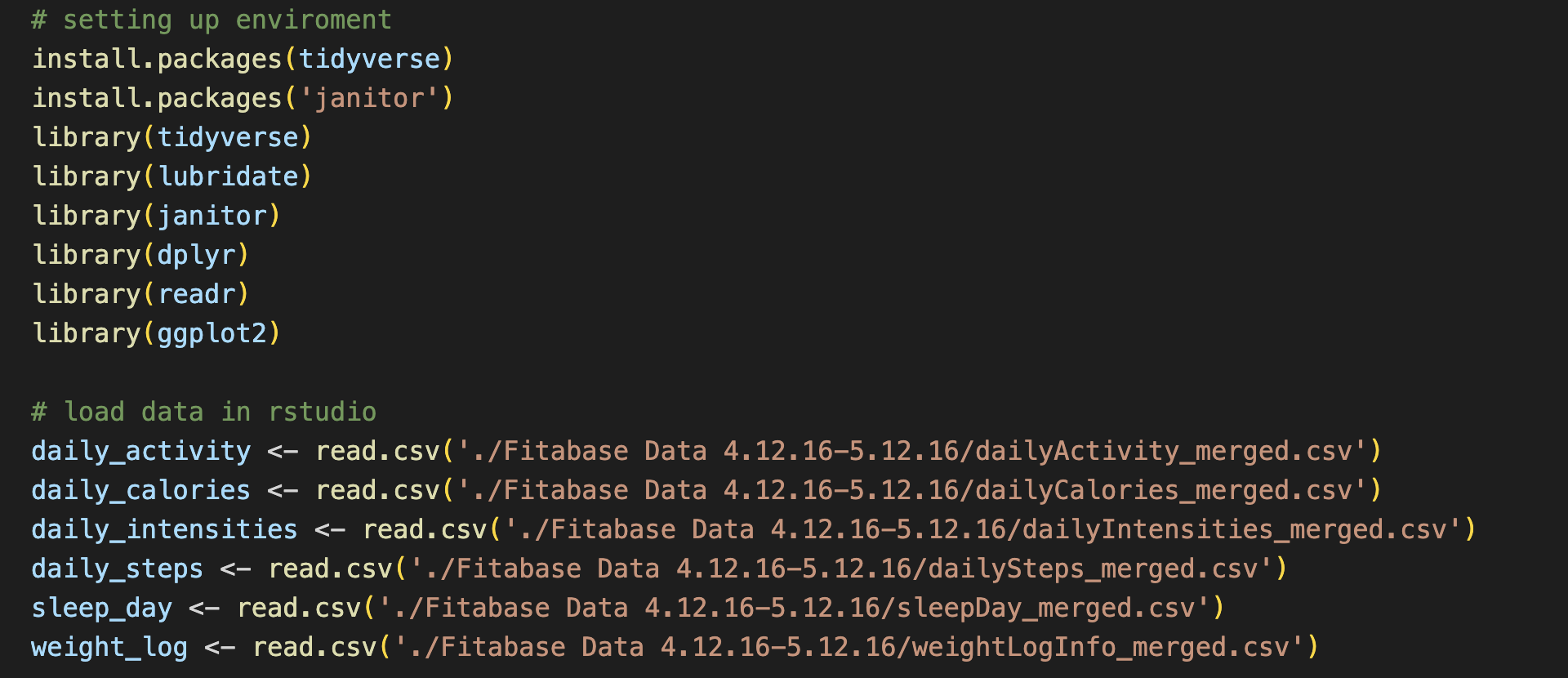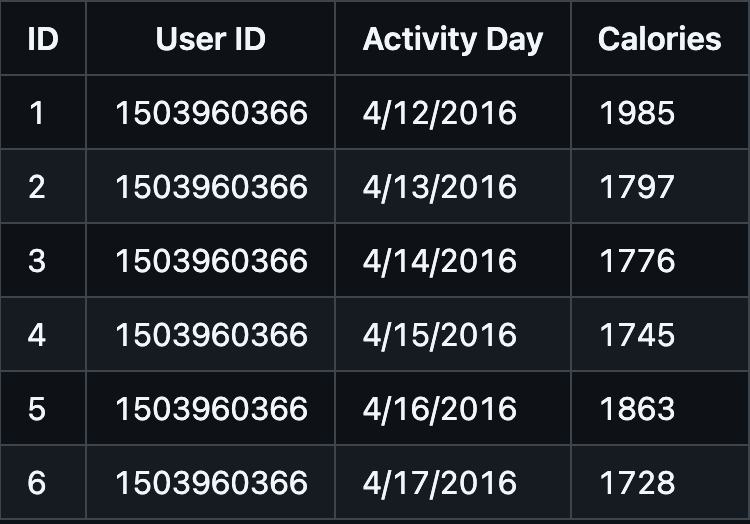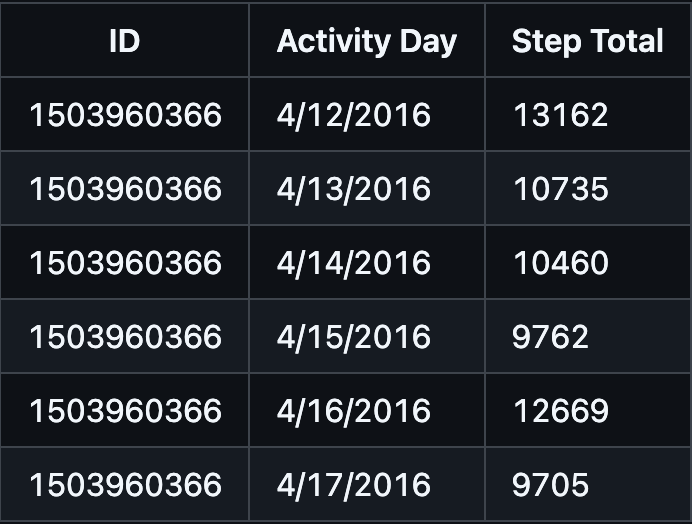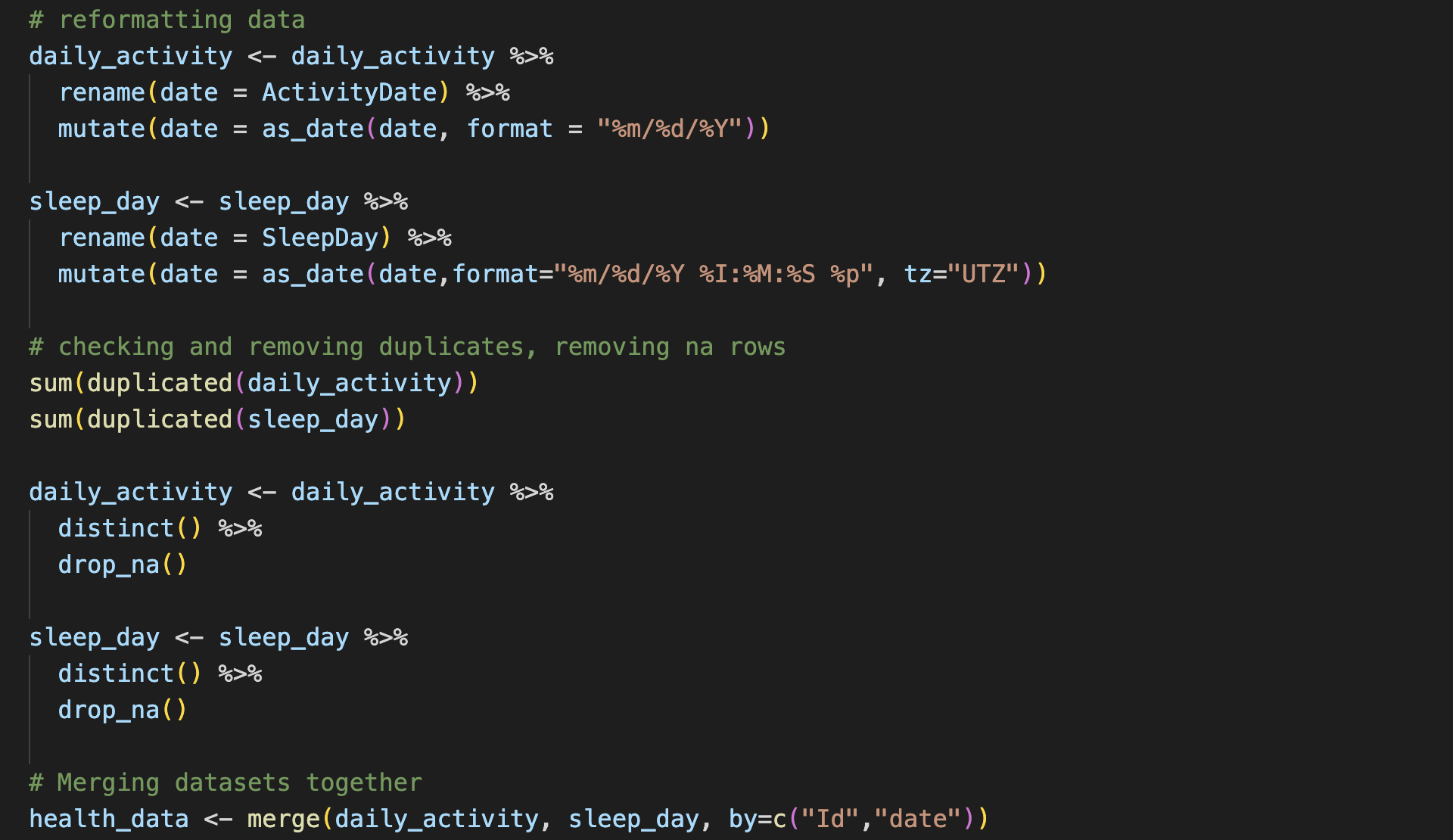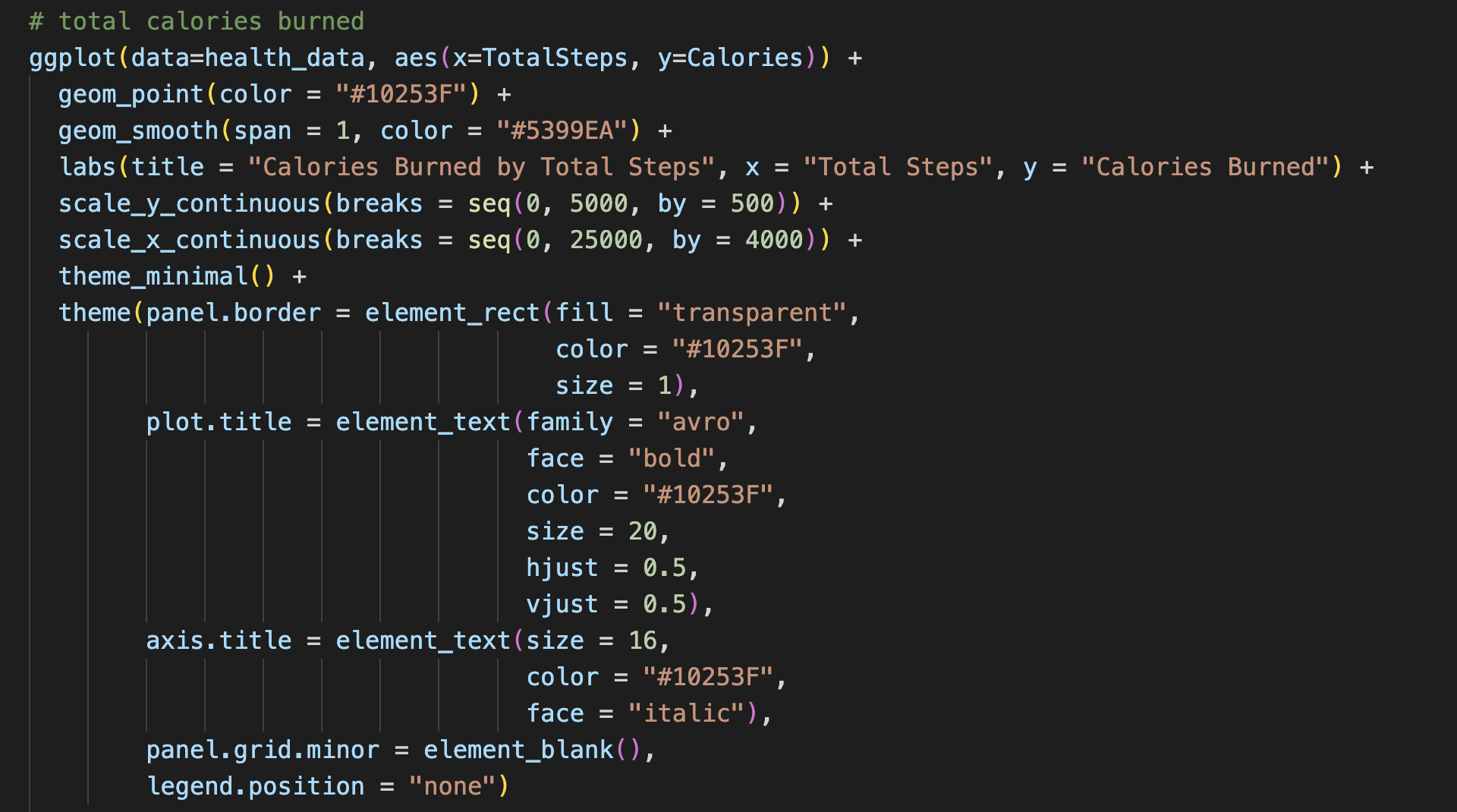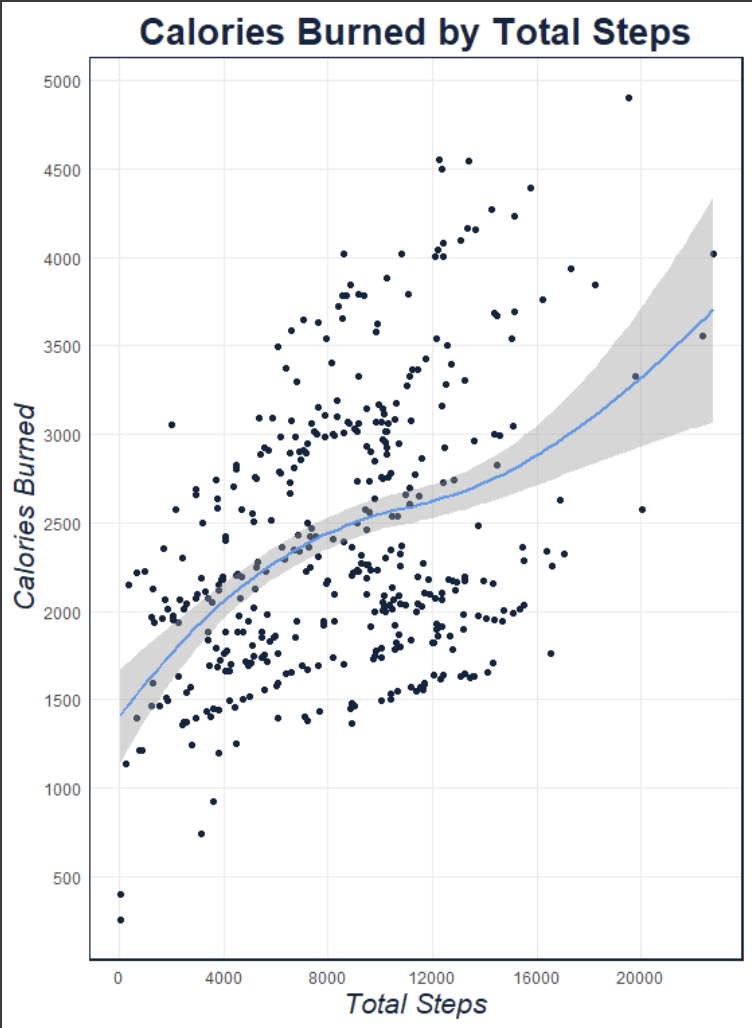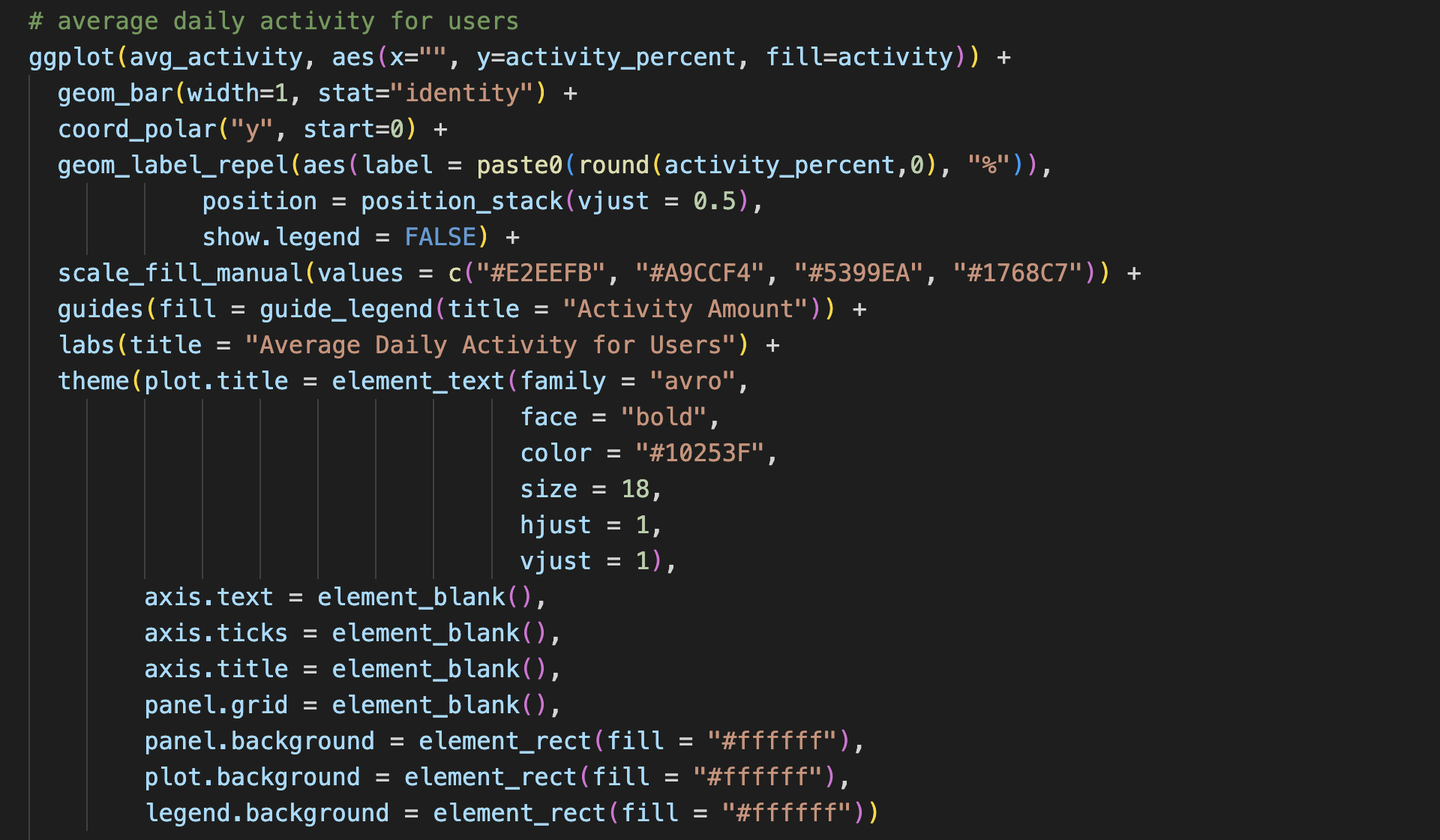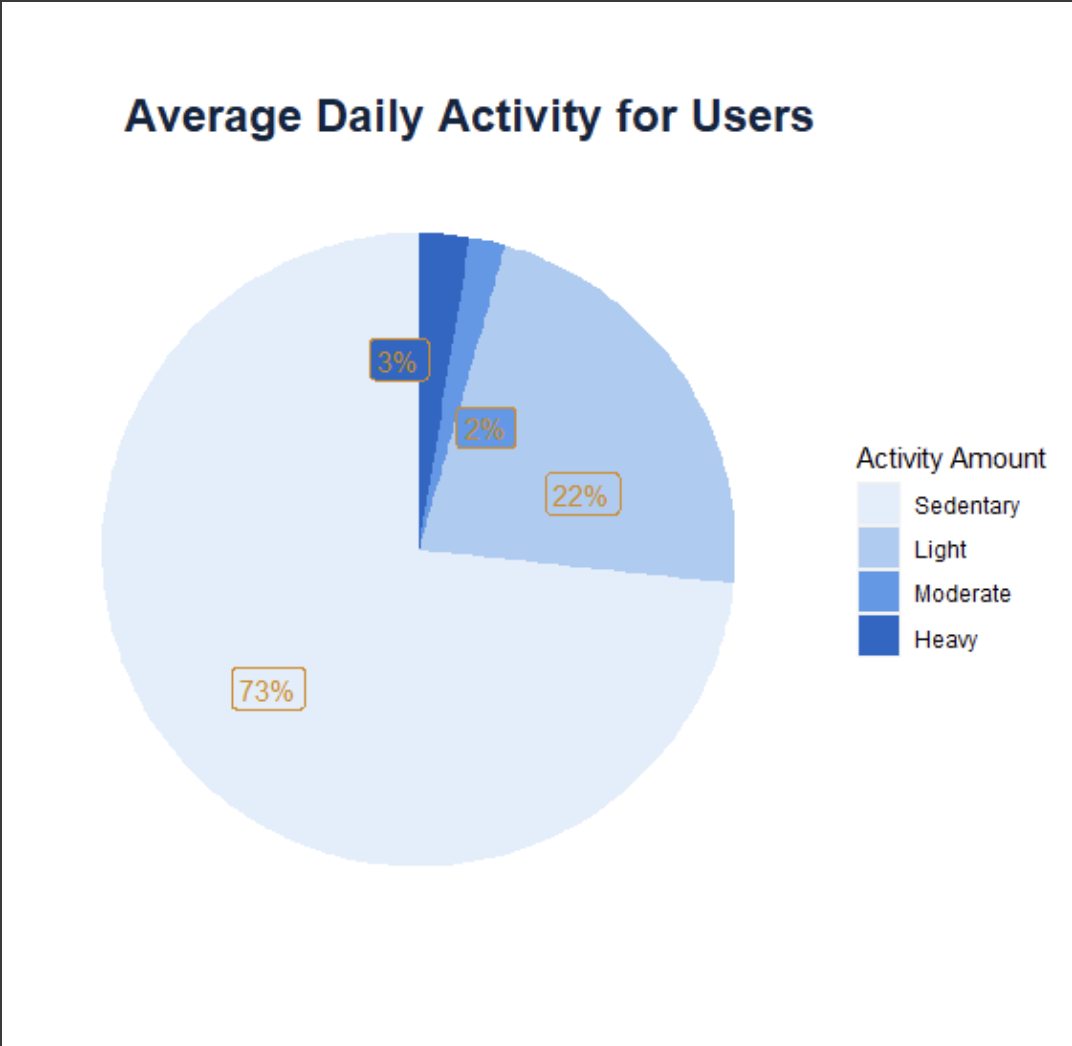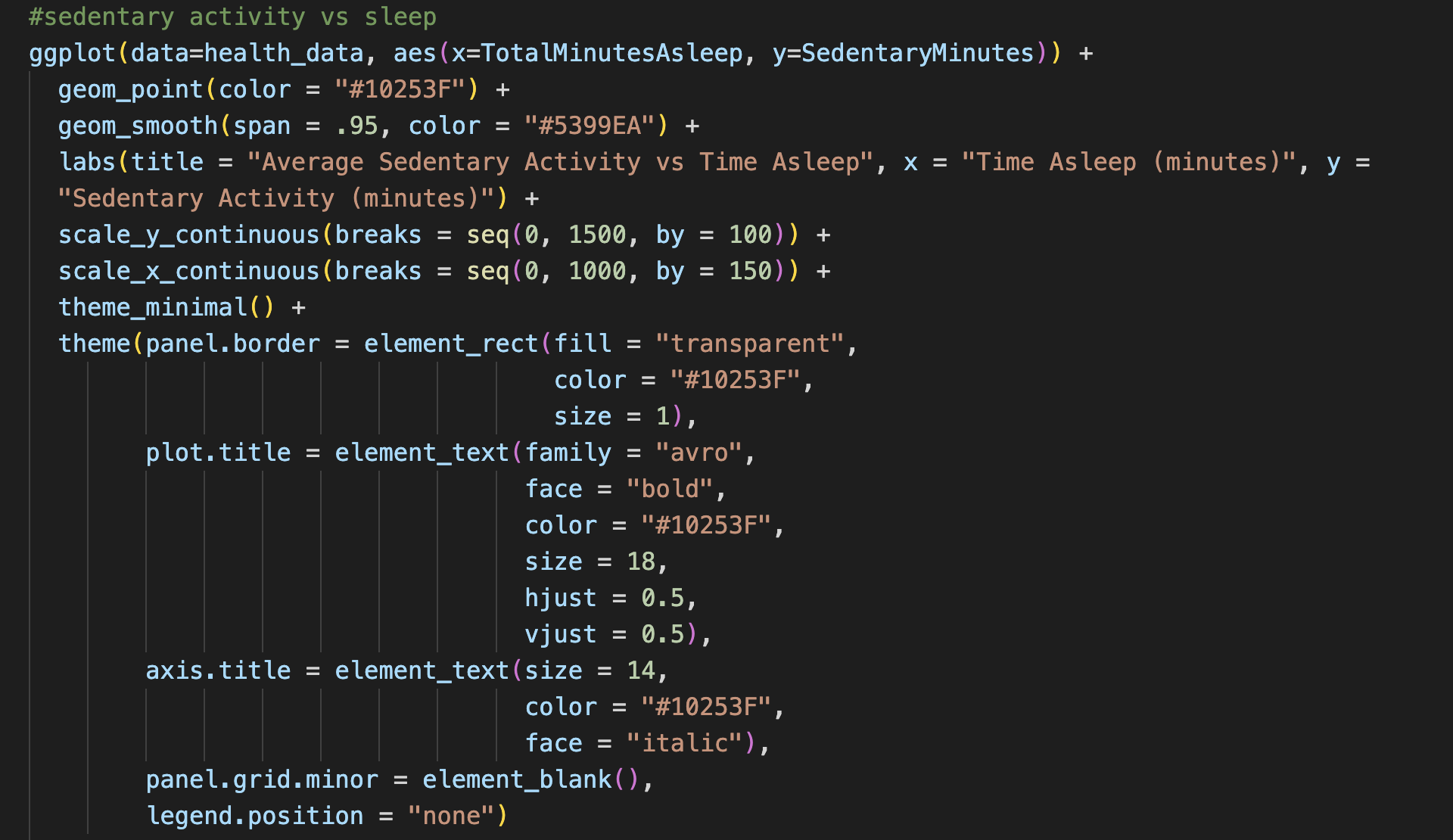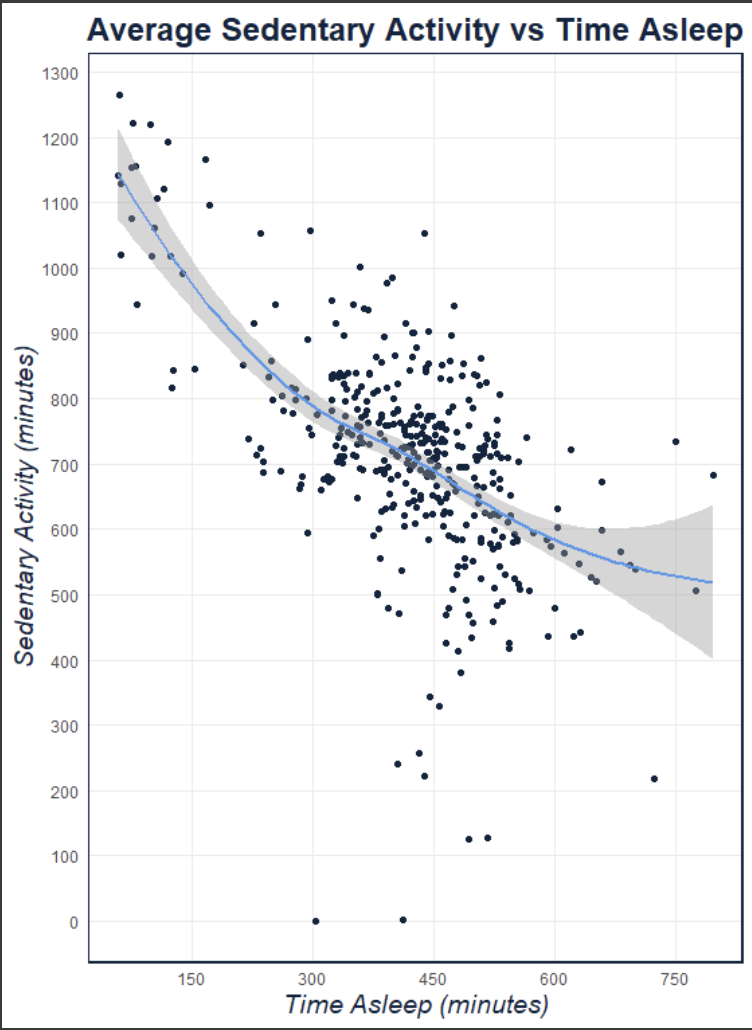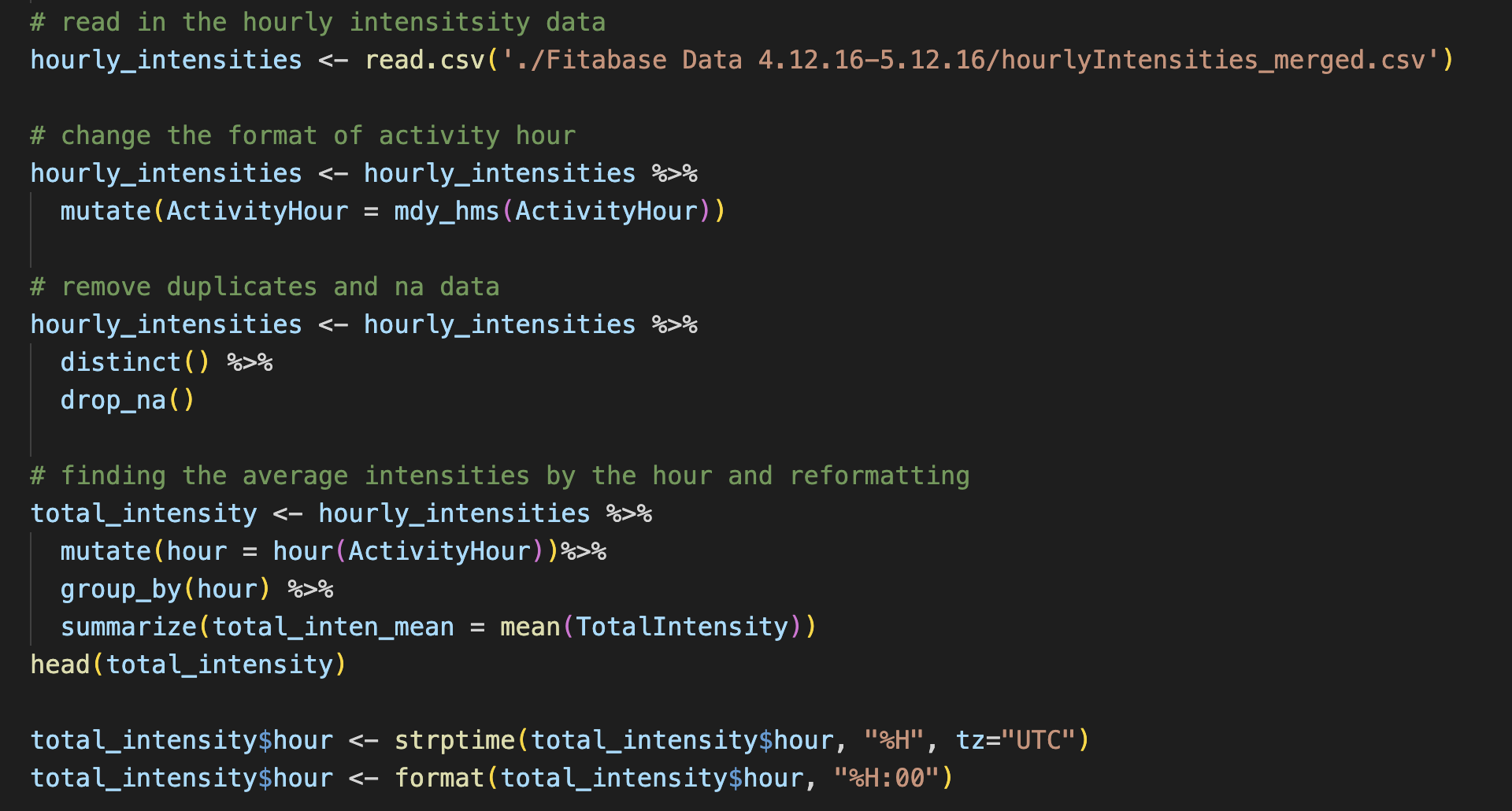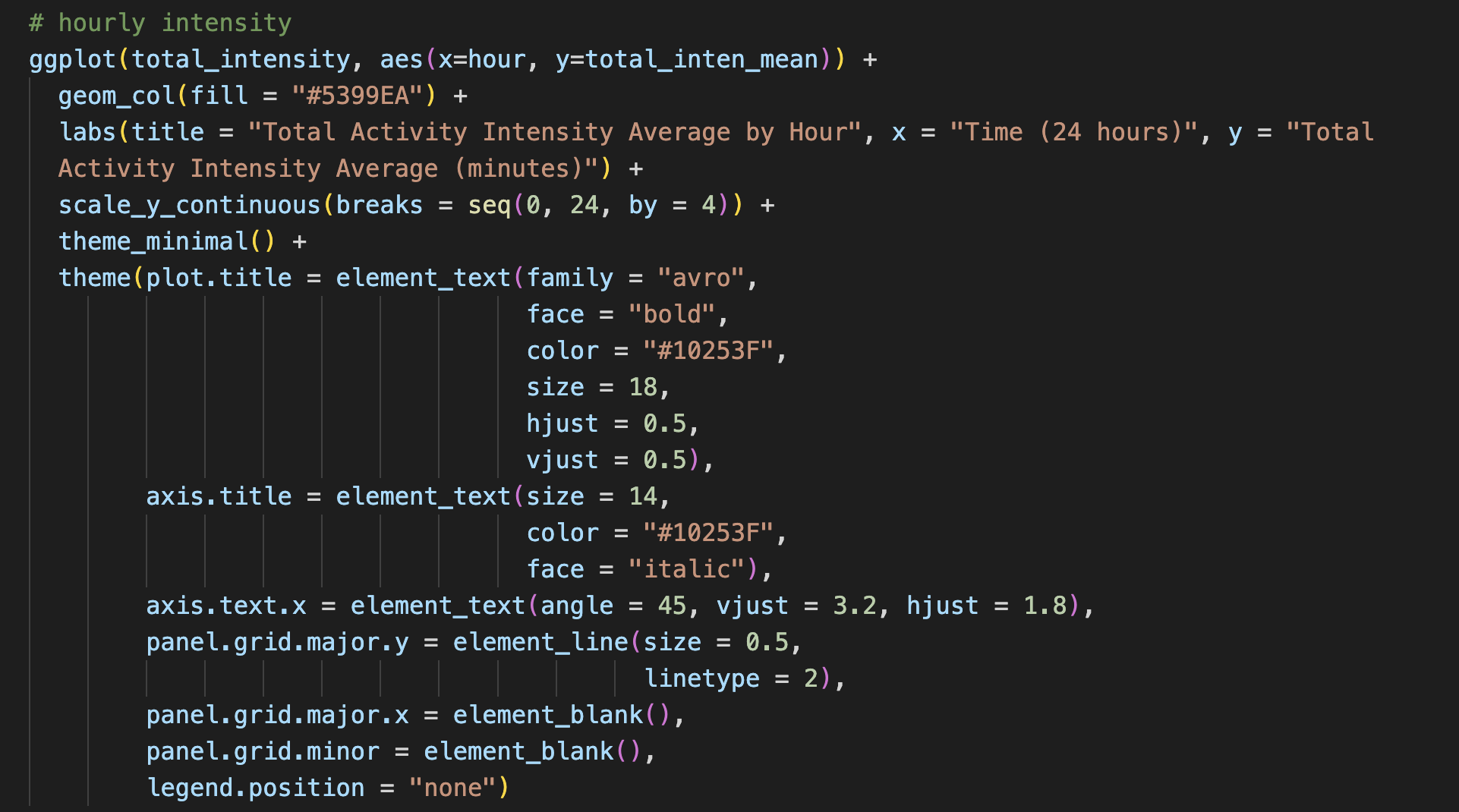
Bellabeat
By: Forest Eyster
Last Updated: 11/20/2023
Introduction
Bellabeat is a high-tech company that manufactures health-focused smart products. Bellabeat is looking for more growth opportunities. They know that an analysis of their available consumer data would provide that. Bellabeat would like high-level recommendations for how these trends can inform their marketing strategy.
Business Task
What are some trends in smart devices that could help influence Bellabeat's marketing strategy?
Data
The data that is provided, for me, is a Kaggle dataset. The dataset contains personal fitness trackers from various Fitbit users. I can use this data to explore habits about daily activity, steps, heart rate, and sleep monitoring. This dataset has a public domain and is made available through Mobius. Below, you can find a link to the datasets.
Hyperlink - https://www.kaggle.com/datasets/arashnic/fitbit
I will use R Studio to clean, analyze, and create visualizations for this case study. My first step is to collect the data and check its integrity. I can do this by checking for missing data, duplicate entries, and consistency. So, let's load this data into R Studio and get started.
Once I have loaded the data, I need to start cleaning and reformatting. This will ensure my data’s integrity when analyzing the data.
Daily Activity Dataset
Daily Calories Dataset
Daily Intensities Dataset
Daily Steps Dataset
Daily Sleep Dataset
Weight Log Dataset
After getting a glimpse of the data, there are some similarities between the datasets. I will drop some datasets because I do not need duplicated data.
We can see the weight_log does not have enough Id logs to give us sufficient evidence of unique weight logs. I will be removing the data.
Once I know my data is clean, I can merge them. I want the Id and date columns to be exact and merge under one dataset. It will make it simpler to analyze my data.
Analysis
How are Fitbit users using the fitness tracker?
Health Data Summary Dataset
Looking at the summary of the health data frame, we can see that the Fitbit tracker is recording their activity. There are a few correlations with the data. One, we see calories burned increase and as total steps increase. Now, let's take a deeper dive into the two values.
With the scatterplot, we can see the correlation between calories burned and total steps taken. This correlation is straightforward because the more steps you take, the more calories you burn. Now, how active are the users daily? I want to see an overall daily average of the tracking time. To discover the answer, I have to do a little math.
Above, I created a new data frame to hold the necessary data. One column has the types of activity. The second column houses the average amount of time a user exerts the class of activity. The third column will hold the percentage of each type of activity. To find the percentage, I need to find the total average of active minutes. Once completed, I can create my graph.
We can now see the daily average of their activity. The majority of the time users' activity is sedentary. If the user wants to burn calories, they need to be more active and take more steps. Now, what can more inactive minutes affect? One sedentary activity can affect our amount of sleep.
Here we can see from the scatterplot, the more inactive minutes for a user, the less sleep the user got. Users could use a reminder to get more active minutes. That reminder will help users get more sleep.
However, this got me wondering, on average, how active are the users by the hour? I will need to do more digging and more data. Luckily, the given data has a data set just for that.
For this data, I am looking for any dips in activity. When does the average user have less activity throughout the day?
Here we can see a drop in activity between 20:00 - 7:00 on a daily average. However, this is probably because people are possibly taking a nap. There is a drop in the middle of the day, 15:00 - 16:00.
Conclusion
Bellabeat is a company dedicated to the health and well-being of its users. I highly recommend using reminders to inform and motivate users. Every user who turns to their products seeks a healthy lifestyle. Reminders to stay active and burn calories would keep users motivated to achieve their goals. By reducing sedentary activity, they can burn more calories and enjoy extended healthy sleep. Additionally, users should consider their stress levels to maintain a healthy lifestyle. To help reduce stress, users should get active, eat healthily, avoid harmful habits, and meditate, which are just a few helpful reminders.
Thank you for your time and for reviewing my case study.
